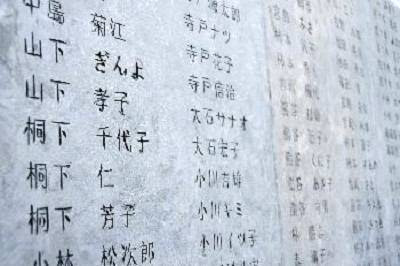 [The Siraya protesting against take-over of ancestral land by the gov't. Source: http://savingsiraya.blogspot.com/2011/06/siraya-glossary.html]
[The Siraya protesting against take-over of ancestral land by the gov't. Source: http://savingsiraya.blogspot.com/2011/06/siraya-glossary.html]
These are expert comments by Andrew Kerslake, re-posted here for easy access:
In many, but not all, Plains Aborigine societies (Siraya and Makato especially), there was a cultural taboo against marriage and live births before the age of 32 for women and 34 for men.
It is believed that this tradition served two simultaneous goals. The Sirayic or Tsouic cultures practice uxorilocal marriage in which the man marries into the woman's house. Siraya used an age-grade system to mete out access to various forms of cultural power and responsibility much like the traditional Amis. When Siraya men achieved a certain level of status once his headhunting days were over, he would pluck the hair on part of his scalp and retreat to a position of "elder". This was the pinnacle of his power.
The Siraya also used this age grade system to manage the sexual division of labor in which the men hunted game and prepared for war. The women reared children, did the weaving, tended the fields and did other housework.
European reports often regarded the men as "lazy" and the women as "hard working". This is because the younger men spent their time hanging in the bachelor house repairing weapons, repairing bodies and preparing for the physical demands of the hunt or the battleground.
So, a prohibition of marriage and live births before 32/34 respectively ensured that (a) a man could risk his life in the hunt or on the battlefield to secure heads without fear of leaving a wife or child if he should die. (b) When a man turned 34 his body would be wearing down and he would no longer be as spry as the young men (yes, we all remember when it happened to us). The man would then be free to marry and move into his wife's house. By this time her father would be in his mid-sixties and realistically too old to compete with his son-in-law as the top man of the house. By that time, if he were still alive, he would be relegated to helping the women with the farming and house chores, which would have relegated him to the status as a "female" and have really no standing in the community as he would be too feeble to participate in "manly" activities.
When the Dutch introduced Christianity, many of the younger Siraya welcomed the change as it allowed them to leapfrog their way to higher positions in the community without having to abide by the age grade system.
I imagine this may have led to an explosion in live births that may have later been misrepresented as Han settlement. Later, during the Cheng and Qing administrations, it is conceivable to believe that many other indigenous groups also experienced a baby boom as they acculturated into Confucio-Han beliefs. I can even see how it may have been embraced by older men who may have felt more revered under the system and able to sire more children.
What is clear is that under the Chengs there was a lack of available women. There had also been enough cases of Han/Aborigine cohabitation under the Dutch to make the Dutch registers. The Chengs had to import something like 20,000 women from present-day Vietnam, Indonesia and China to appease the ranks.
Despite the various maritime quarantines, many women made the trip. A lot of men also retreated back to China.
Still lots of questions that remain, but I think the indigenous contribution is greater than currently accepted, but not as high as many might wish.
Let me just add that by the 19th century there were many villages already described by Europeans as "half-caste". It is unclear how the offspring of cross cultural marriages viewed their ethnicity, but by Han cultural norms they would have been regarded as Han and thus may have led to some confusion in the records.
Another important note is that in the Confucio-Han cosmologies adopted by the Qing, the blood, DNA or direct descent was not regarded as being very important. Having a child tend to ancestral graves and work all the Fengshui was far more important than blood. This made interethnic adoption a very accepted and common way for Indigenous children to become Han. The importance of blood only came after the arrival of Darwinian science and the ethnic nationalist movements of the latter 19th century.










